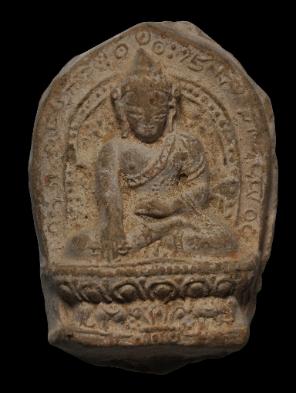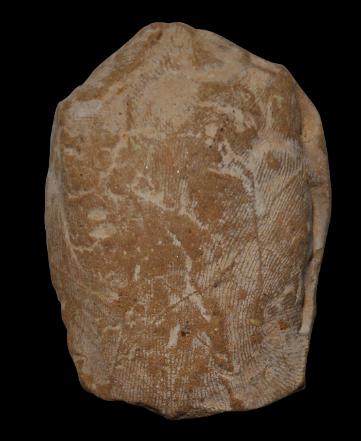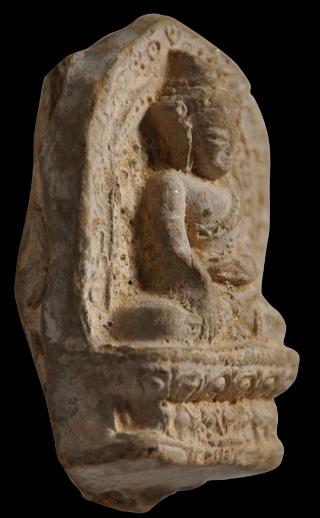
Clay Votive Plaque (Tsa-Tsa) of, the Buddha with Lantsa Script, Tibet, circa 18th-19th century
Clay Votive Plaque (Tsa-Tsa) of the Buddha with Lantsa Script
Tibet
circa 17th-18th century
height: 4.8cm, width: 3.5cm, thickness: 2cm
This fine, devotional votive plaque or tsa-tsa was made by pressing clay into a metal reverse-mould after which it was fired. It shows the historical Buddha,the Shakyamuni Buddha, who lived over 2,500 years ago in India and gained enlightenment under the bodhi tree. He is seated in full cross-legged position on a lotus throne with his right hand in the earth-touching gesture and his left hand resting in his lap. Shakyamuni Buddha’s mantra is ‘Tayatha om muni muni maha muniye soha’ which appears to be what is written in Lantsa script around the arched border that surrounds the Buddha.
Such tablets were acquired by Buddhist devotees and pilgrims as acts of merit, often at religious sites, as mementos and talismanic or protective keepsakes. The plaques often were made in one location and carried by pilgrims to be left at a site in another location, perhaps in a cave or at an important shrine. According to Proser (2010, p. 167), the practice of spreading
tsa-tsa offerings throughout the landscape can be likened to sowing seeds of potential spiritual merit, somewhat akin to laying out ‘fields of Buddhas’ throughout the world.
The example here has sharp features and is in a fine, stable condition.
References
Proser, A., (ed.), Pilgrimage and Buddhist Art, Asia Society Museum/Yale University Press, 2010.
Provenance
Collection of Stephen Masty (1954-2015); see
here
Inventory no.: 4439
SOLD




